Talent management is one of the most important components of every business.
As employee engagement and productivity drive business success, it is not surprising that organizations invest in their talent management initiatives more than ever before.
💡Download the eBook “10 Principles of Modern Employee Communications” and learn how to communicate with the modern employee in today’s digital age.
Given the current COVID-19 circumstances, employers are trying to ensure business continuity and mitigate the consequences the pandemic has on their company as much as possible.
In this blog, we will go over some of the TM best practices every employer should follow during these unprecedented times.
The New Definition of Talent Management
When we used to talk about talent management in the past, we mostly thought of initiatives that fall solely under the departments of human resources.
However, a successful TM strategy requires much more than that. This is especially true now when organizations are faced with the unexpected crisis that has completely reshaped Human Capital Management.
HR, managers, leaders, IT and internal communications professionals all play a significant role in shaping a positive employee experience and enabling employee success.
Therefore, talent management practices have evolved over the years to adjust to people-specific trends. Strategic talent management is necessary in today’s hyper-changing environment.
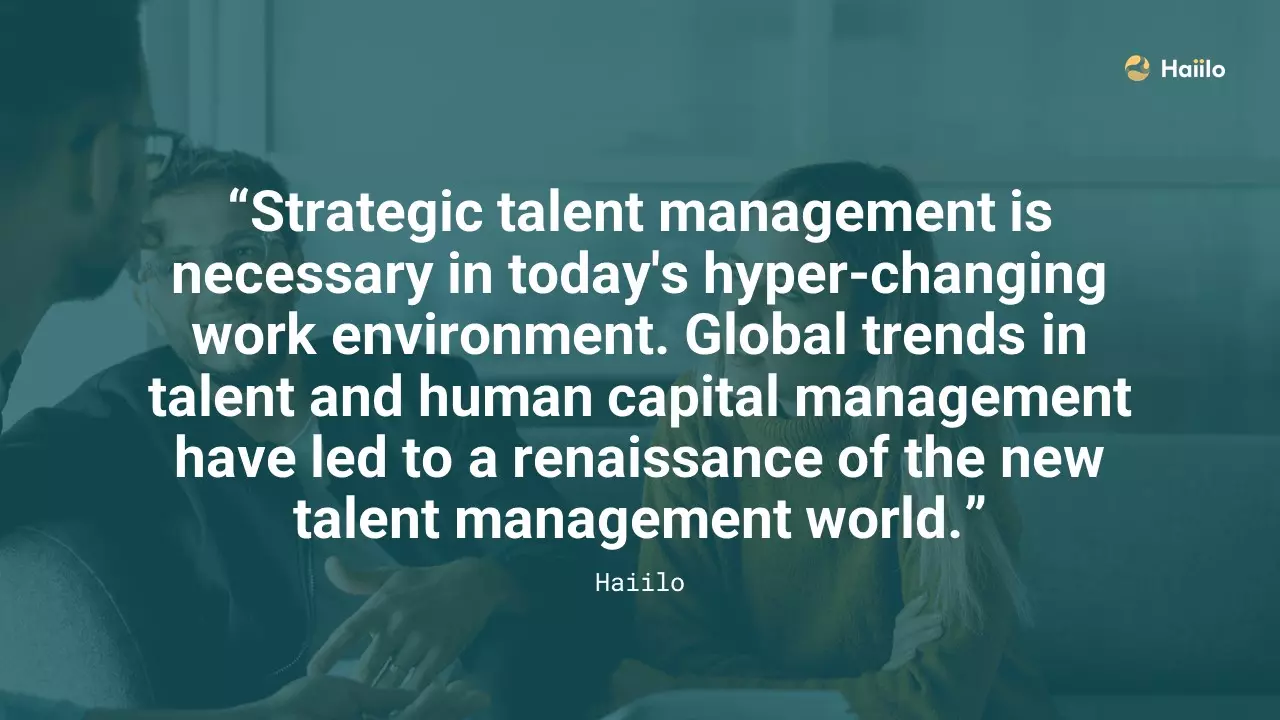
Talent Management Tips and Best Practices
Your company’s success depends on your talent management initiatives and your ability to enable and support your entire workplace to do their best.
As talent management is an ongoing process throughout the whole employee lifecycle, we will now go over the steps and best practices employers should follow to master their talent management strategy even during a crisis such as COVID-19.
1. Invest in your employer brand
Talent management starts even before an employee joins your organization. In order to attract and bring the right talent to your organization, employers need to invest in their employer branding initiatives.
Creating interesting and useful employee-generated employer branding content and sharing it through the right EB channels such as Social Media and company’s career site are some of the most common employer branding practices. Others include employer review sites such as Glassdoor as well as participation on the local events such as career fairs.
However, employer branding is impossible without the help and engagement of your existing employees and without the alignment of your communication efforts.
🧡 How our customers do it?
Employer branding and company’s reputation highly depend on the alignment between your internal and external communications as this has a big impact on how your employees and candidates perceive you as an employer. This is even more obvious during the current pandemic in which external and internal communications make some of the most important strategic business partners.
Using Haiilo, employers have the ability to centralize their internal and external communication messages and make them easily accessible to the entire workplace. Such transparency in communications is a one of the most attractive traits talent is looking for in an employer.
2. Start an employee advocacy and ambassadorship program
Employers who have the most successful employer branding strategies are the ones who manage to engage their own employees in the whole process.
In this phase of talent management, employee advocacy and ambassadorship programs are extremely useful when it comes to creating and sharing company’s employer branding content.

🧡 How our customers do it?
In order to make employee ambassadorship programs work, you need to ensure that your employees are well informed and feel engaged. Employees who are happy with their jobs are more eager to share company news with their personal networks!
But you need to make sure that employees have all the content they can share externally available in one place. And to make it even easier for your employees to share content, you need to make it available on their mobile phones.
Many of our existing customers use Haiilo, our employee communication app, to enable their employees to, without much effort, become their most valuable employer brand ambassadors.
3. Be smart about job advertising
Even though some organizations have frozen their hiring efforts, job advertising is an important part of your talent management strategy. Writing attractive job descriptions, job ads and sharing them through the right channels such as Social Media (LinkedIn and Facebook), job boards, and career sites are the main responsibilities that fall under this talent management function.
Similarly to the brand ambassadorship programs, your employees can be extremely valuable source of new hires. You all probably know that referrals fall under the highest quality employees.
Again, employees have a much bigger potential to reach a wider audience through their Social Media channels. This is why you should promote your open positions internally and make them easily shareable by your employees.
🧡 How our customer do it?
Our current customers use Haiilo to regularly share their open positions to the specific departments, job functions or with the entire workplace. In a matter of seconds, employees can share those open positions on social media and reach many more passive and active job seekers.
This way, companies can not only attract better quality candidates, but they can also save valuable resources spent on job boards and other paid advertising channels.
4. Choose the right new hires
After you manage to attract people to your organization, you need to make sure to assess them to ensure that they are the right fit for your organization. Testing, assessments and candidate interviews are the most common functions under this part of talent management.
Here, it is important for employers to have a structured way to test their candidates, eliminate bias and provide equal opportunities for everyone.
Additionally, providing a positive candidate experience is another emerging trend in the world of talent acquisition. Employers need to communicate in a personal and timely manner with their candidates to prove to them that they have chosen the right employer to work for.
5. Set employees for success with proper onboarding
New hire onboarding is considered as one of the most important parts of talent management. During onboarding, employees need to get a very good understanding of what their jobs will entail and what their specific duties and responsibilities will be.
Proper employee communication is crucial at this stage as it helps create a memorable onboarding experience. Welcoming new hires, introducing them and connecting to the rest of the workplace is crucial if you want to help your employees feel welcomed and accepted by their peers and higher-ups.
Additionally, you want to ensure that all of your new hires have access to all the important company information, updates and documents needed to do their jobs successfully. In this phase, you need to give your best to set your new employees for success.
Yet, over 30% of employees do not get such treatment.
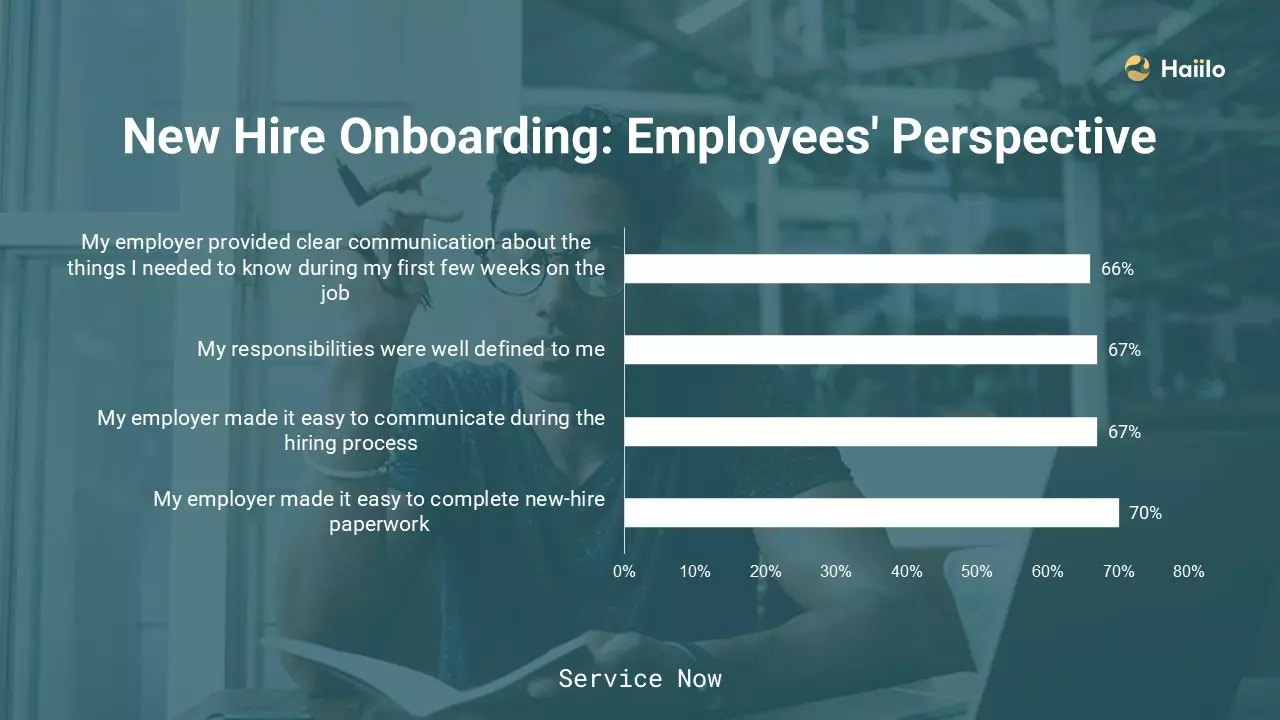
🧡 How our customers do it?
With Haiilo, our customers can create personalized employee news feeds and put all the important new hire documents and tools in one place. This makes onboarding much more structured, efficient and intuitive to the new hires.
What’s more, managers can create designated communication channels devoted to their new hires to ensure that they have everything that they need in their first weeks of employment.
And to make new hires feel more welcomed, employers can easily share the news with the rest of the employees and enable them to join the conversation to welcome their new colleagues. There is no better way to provide an onboarding experience your employees will remember!
6. Adjust your employee communication strategy
Employee communication is one of the main pillars of every successful talent management strategy. Today, employees want to be well informed about the relevant updates going on within their organizations.
This current situation has taught us all about the true value of proper communication in the workplace as it is the only way to ensure employee engagement, productivity and safety even when we are physically not together.
Employees also want their managers to be better communicators and create better connections within their teams as well as among teams from different departments.
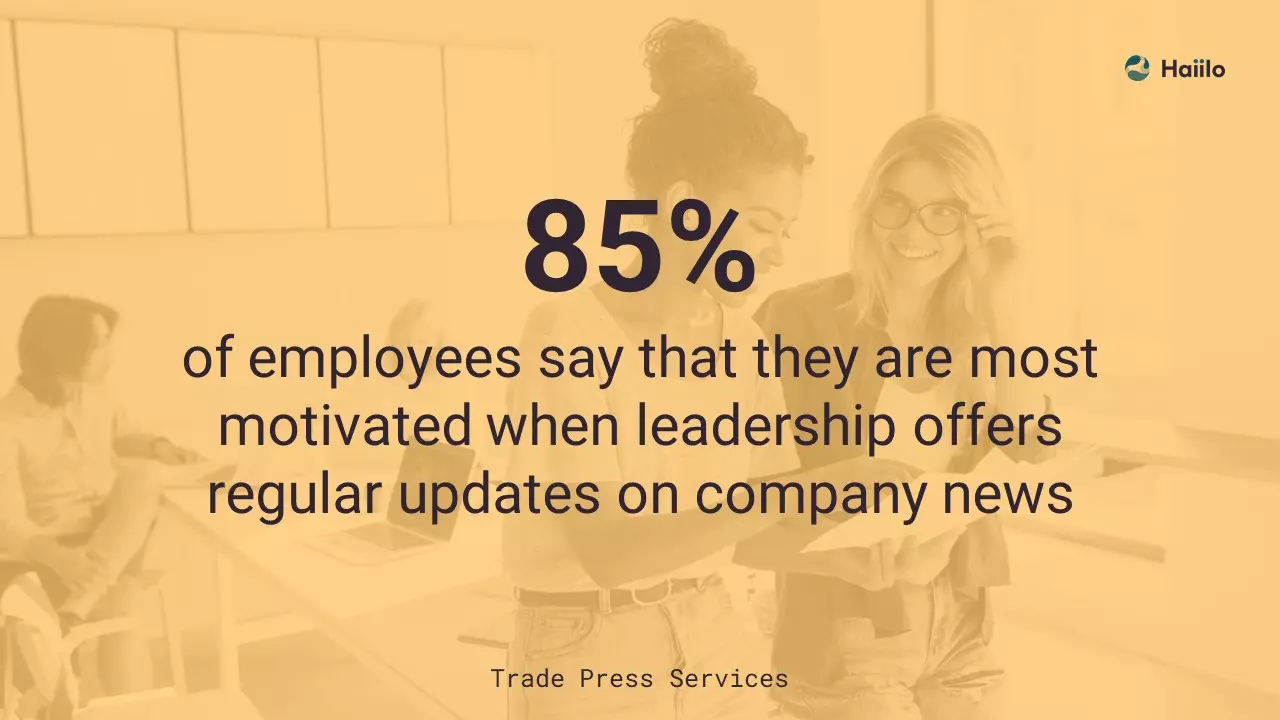
Additionally, employees don’t want to spend hours every day searching for relevant and important information needed to do their jobs successfully and productively. Employees want the information to find them, not the other way around.
🧡 How our customers do it?
Haiilo is an employee communication solution that ensures the right flow of information within workplaces. With Haiilo, employees can finally have a central communication destination where they can be sure to find important, relevant and useful company information.
In parallel, employers can filter and segment their audiences and deliver timely and personal messages to every employee in the organization. They can create push notifications to better handle crisis and always stay connected even with their deskless employees via our mobile application. To measure the engagement with the internal content, IC professionals can measure how, and to what extent, the content is consumed by employees.
💡 Read more about the most common employee communication mistakes and how to avoid them.
7. Continuously invest in employee engagement
Who doesn’t want their employees to be more engaged? Which organization doesn’t want their employees to be more motivated and productive?
We all do!
This is why the strategies and initiatives around employee engagement make a vital and an ongoing part of talent management. As higher employee engagement results in higher business profitability, it is not surprising that organizations continuously invest in initiatives that can improve engagement.
Team leaders and managers are the ones that account for more than 70% of the variance in employee engagement. and employees say that they are most motivated when their managers regularly share company updates.
Therefore, they should have clear strategies around how to improve it. One of the most efficient ways to do so is by performing a continuous employee communication and performance management.
🧡 How our customers do it?
As proper employee communication impacts employee engagement, Haiilo users have managed to boost their employee engagement and productivity levels. Haiilo enables employees to stay connected and informed and to feel aligned with the overall business strategy in order to better understand how their work contributes to the business success.
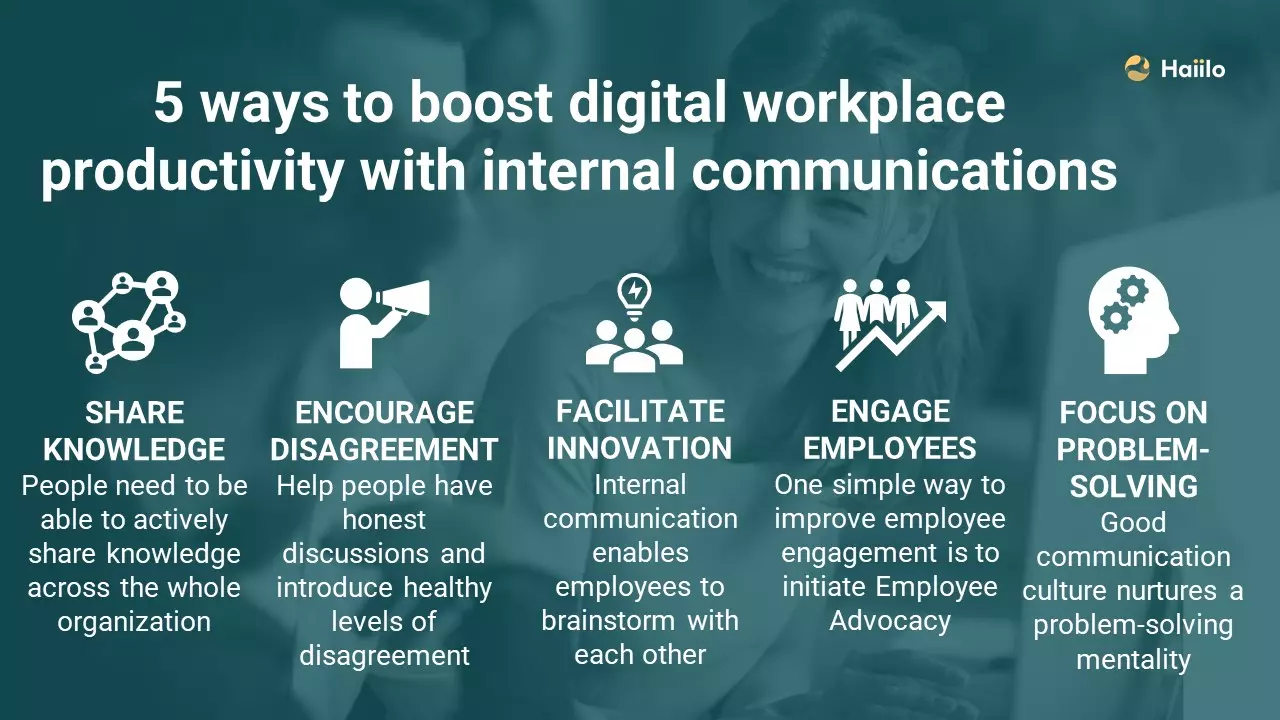
Additionally, employers and managers can, using Haiilo, deliver their employee engagement and other surveys in order to better understand their employees’ feelings, needs, preferences and challenges.
8. Forget about annual and quarterly performance reviews
Many employers would agree that employee performance management is the most important part of the overall talent management strategy. Employees who have clear goals and get regular and meaningful feedback on their work are much more likely to be more engaged at work, more productive and have lower turnover rates.
Here, it is important to understand that employees don’t just want quartal or annual performance reviews. They want on-the-spot feedback as well as ongoing communication with their higher-ups.
🧡 How our customers do it?
Haiilo empowers managers to communicate with their teams in real-time, give them feedback on their work, share relevant information and build better employee-manager relationships.
As fragmented communications ecosystem can cause disengagement with manager communications, Haiilo helps managers consolidate their communications stack by giving employees a single source of information to stay informed. Additionally, our mobile-first approach enables managers who lead remote and non-wired workers to be more approachable.
9. Ensure employee learning and development
Another big function of talent management is employee learning and development. For Millennials and Gen Z workers, one of the most important criteria, when evaluating their employers, is the ability to grow and learn new things.
Therefore, employers should have a strategy around up-skilling and re-skilling their employees. Not only will this satisfy your employees needs, but it will also help you close the skill gap that most organizations struggle with today. The best way to achieve this is through knowledge sharing among your employees.
🧡 How our customers do it?
Companies that use Haiilo have the ability to easily share knowledge within the organization. Additionally, managers and employees can subscribe to additional channels where they can keep and consume content based on their areas of interest.
Take this research into consideration:
In a company with 100 employees, with average salaries of $60,000 annually, each of them wastes at least 5 minutes per day looking for answers to common questions. How much money does the company waste because of this?
$62,000 annually!
Therefore, it is important to ease and support knowledge sharing in your organization.
10. Don’t neglect employee offboardings
Even though employee exits are not our favorite talent management practices, we need to learn about how to make this experience as positive as possible and learn something out of it.
Whenever you have an employee leaving your organization, you should give your best to learn about the specific reasons for their decision.
You can do so in a form of an exit interview or an anonymous survey.
11. Be more data-driven
In the past, talent management professionals didn’t really give much attention to people analytics. Today, organizations require from their leaders and managers to make data-driven decisions.
As we can measure many of our employee-related initiatives today, we need to learn about how to take a better advantage of data in order to make better future decisions.
For all of the TM subfunctions, there are designated software solutions that enable employers to understand their talent management initiatives backed by real data.
🧡 How our customers do it?
With Haiilo, employers can get valuable insights about employees’ engagement with the content delivered by their managers or internal communications professionals.
In most cases, the higher the engagement with the internal content, the higher employee satisfaction levels are. Additionally, Haiilo users can track what type of content employees consume, share and like the most and, therefore, get valuable recommendations for improvement.
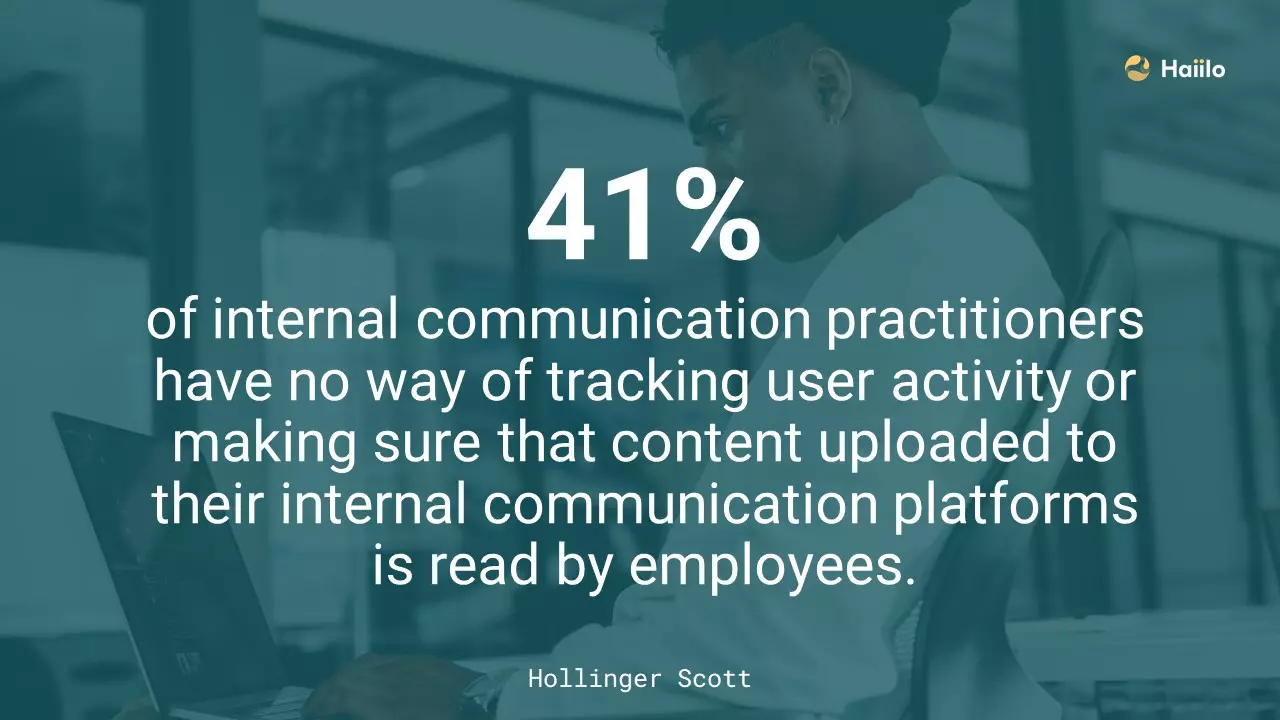
12. Implement the right software solutions
Most of the above mentioned suggestions are impossible to achieve without the proper tech solutions. Tools for talent acquisition, onboarding, performance management, employee communication and engagement have many benefits that employers should take a better advantage of.
🧡 How our customers do it?
The reason why employers love Haiilo is the fact that with the platform, they can easily create a central place that serves as the main source of valuable information for their employees, which positively influences employee satisfaction, productivity and experience.
Talent Management Subfunctions
Talent management is a very broad term that consists of different subfunctions. It starts with recruitment or talent acquisition and ends with employees’ exit.
Therefore, talent management strategies have to cover employee touch points throughout their whole journey within an organization, from hire to retire.
Here are the main subfunctions of talent management.
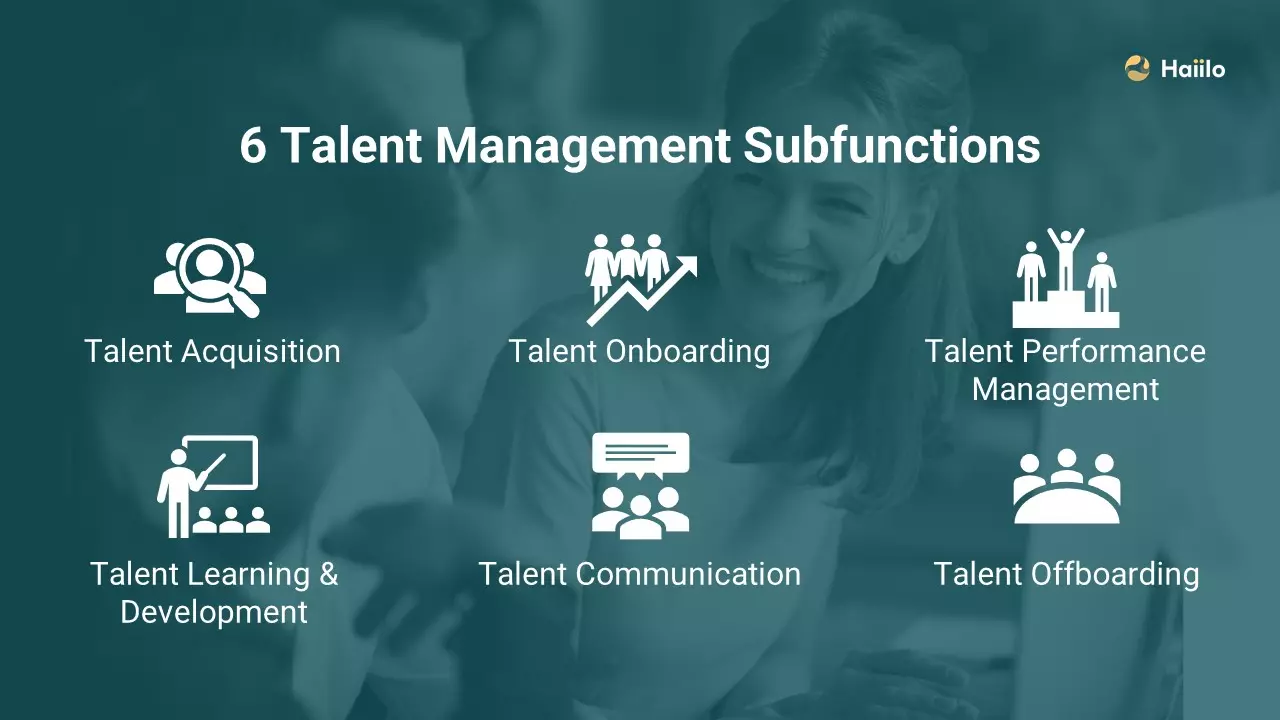
Talent Acquisition
Explained in a simple way, talent acquisition professionals are responsible for filling out a company’s open positions. However, their jobs entail much more than that. Today, these professionals have to understand the company’s strategic hiring needs and be ready to recruit proactively for the future hiring needs.
They participate in job advertising on various channels, writing job descriptions, managing the selection and interview processes. TA professionals are responsible for developing and managing the whole recruitment process.
In addition, their knowledge and expertise in the field of employer branding is now very appreciated. As the war for talent is very competitive, having knowledge about how to present a company as a desirable employer is a big plus.
Talent Onboarding
During onboarding, your employees get the first impression about how will their job look like. This is why the quality of onboarding has a very big impact on talent retention.
Onboarding professionals, together with team leaders, are responsible for setting new employees up for success in the future. Onboarding has to be structured, organized and well-managed as this is what new hires expect from their employers.
Talent Performance Management (Talent Success)
Team leaders and managers are held responsible during the majority of the employee lifecycle. This phase of the talent management process is the longest and it requires from managers to continuously work with their teams in order to make employees productive and successful.
Today, talent performance management does not mean giving quartal or annual performance reviews. Employees want to have clear goals and continuous feedback on their work and achievements.
In addition, continuous employee training is another important role of talent performance management.
Talent Learning & Development
Opportunities for development and career growth are one of the top factors influencing employee satisfaction with their current employers.
Moreover, many of them would go work for a different employer because they are looking for career advancement opportunities. This is why many employers today have career path and career succession plans for their top performers.
Additionally, professionals responsible for talent performance management and development may be included in company’s initiatives around compensations and benefits.
Talent Communication
Even though many employers wouldn’t consider this as a separate talent management subfunction, the importance of internal communication in shaping positive employee experience is too crucial.
As internal comms departments are now important strategic business partners of every business, it makes complete sense to have talent communications as a subcategory of talent management.
Talent Offboarding
When an employee decides to leave an organization, employers should have a strategy around how to make this experience as positive as possible. Word of mouth by your former employees has a direct impact on your company’s ability to attract and retain talent within an organization.
Therefore, employers should see offboarding as an opportunity to learn more about the reasons for leaving and make appropriate actions in the future. Performing exit interviews is one of the most common practices in the talent offboarding management process.
The Importance of Leadership and Manager Communication in Talent Management
When we talk about talent management, it is important for organizations to understand the effect of leadership and manager communication on employees’ success.
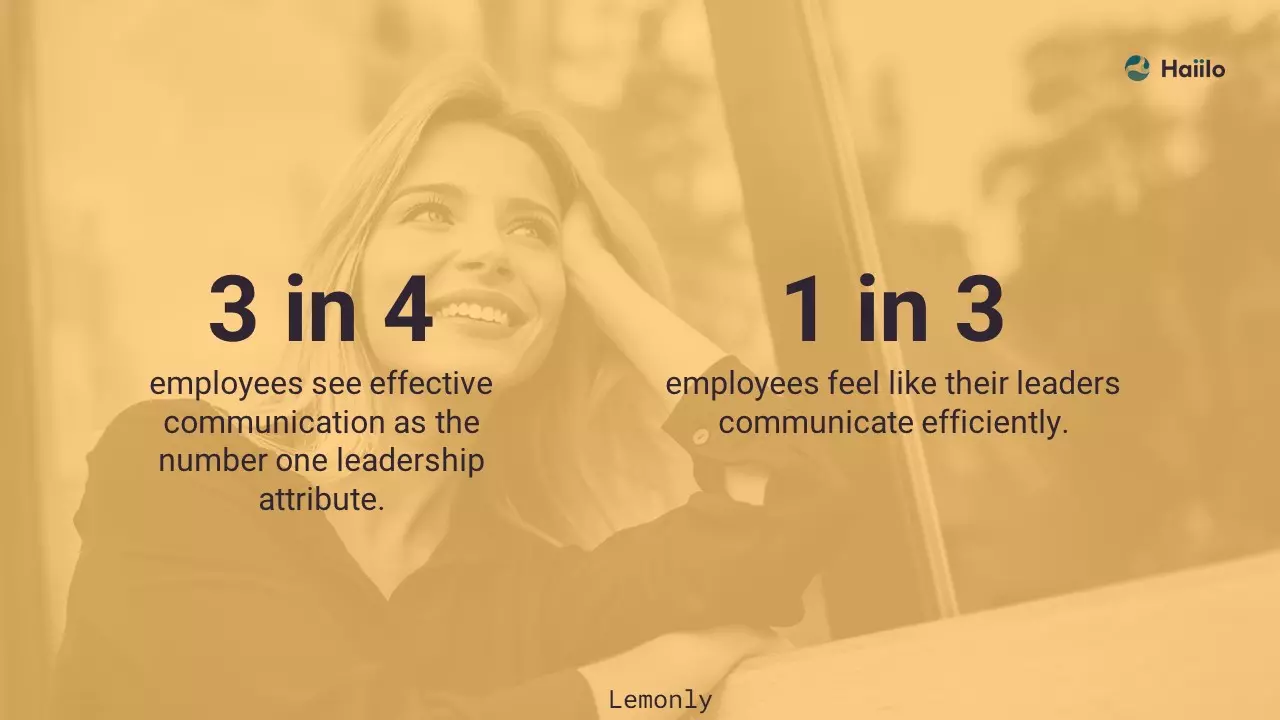
As described earlier, the right communication skills, proper communication from leaders, managers and internal communications professionals have an enormous power to shape a better employee experience and a healthier workplace culture.
This is why many organizations today use Haiilo, our mobile-first employee communication tool









